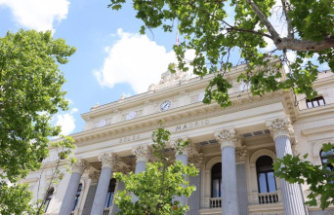The Germans have-they calculated all the consequences of their political energy "renewable"? The country, which does not reach its goals of reducing CO2 emissions, pollutes already more than its european neighbours, due to the use of coal-fired power plants conventional. But while a commission has made its findings on Friday, and advocates the exit of the coal by 2038, another problem is looming on the horizon, and this one is well visible in the landscape: that of the old wind turbines to be recycled. According to an article in the swiss daily Basler Zeitung, on 29,000 wind turbines in germany, 5700, will see their public funding due to expire in 2020. And according to the German federation of wind energy, more than a quarter of onshore production will disappear by 2023. To the key, a dismantling massive, which promises to be particularly difficult and costly.
" READ ALSO - The "green" technologies are they so righteous?
Of the blades fiber glass-problemInsiders at the end of the 1990s, many of the sites operating wind turbines had the effect of feed-in tariffs guaranteed for twenty years, before having to sell their electricity to the tariff market. These machines, technically obsolete, no longer competitive at the current prices, and as soon as you stop subsidizing, their economic interest becomes non-existent. A first solution consists, as is already the case, to resell for public projects in less developed regions (Africa, Maghreb, eastern Europe), but already, the number of wind turbines available exceeded the demand and the potential opportunities.
" READ ALSO - De Rugy highlights the "important role" of nuclear power
The recycling will therefore be needed, and with him, trouble. A good part of the wind turbine is made of steel, easily replicable industrially, as are the connections and copper tubing. But the blades are made of multiple layers of fiber glass bonded together with polyester resins, and are very difficult to recycle. According to Veolia, who is currently conducting research on the topic, we can expect 50,000 tonnes of wind turbine blades recycle in the next year. The industrial group shows that they can still provide an "excellent solid fuel", but the residues of materials are often too thin and damage the filters of the incinerators. "We are facing a huge problem," admitted in 2017, a spokesman of a large recycling company, German business daily Handelsblatt.
foundations of pollutingThe recycling of the blades is not, however, the last financial difficulty - and green - to provide for the German engineering sector. The complete removal of the concrete foundation of the wind turbine can quickly cost several hundreds of thousands of additional euros, a sum that most operators have not integrated in their business plan. For each mast, planted 250 to 400 cubic metres of reinforced concrete were sunk into the ground, or the equivalent in volume of a small house. End-of-life, the removal operation constitutes a green investment essential, in the measure where the foundations through various geological strata, and can disrupt the aquifers of the sub-soil, and groundwater.
despite these imperatives, the first déplantages have often given rise to negotiations between companies and landowners to remove only a superficial part of the concrete. The rest is then covered with earth. Finally, the question of the paths and of connecting circuits, sometimes back-filled, can also be a problem. Don't pollute by producing electricity is one thing, to be a source truly "green" energy seems to be another.
" READ ALSO IN Noirmoutier, antiéoliens taxed "geraniums"
In France, the environmental code provides that the company operating a wind turbine at the end of life must lead to the restoration of the site. It is required to save a certain amount over the life of the project, but it is often less than the cost of a breakdown in the rules of art. The multi-year Plan of Energy recently unveiled government plans to make mandatory by 2023 the recycling of the constituent materials of the wind turbines during their dismantling, and to promote the re-use of wind energy sites in end-of-life to re-establish higher-performance machines.
Date Of Update: 30 January 2019, 00:00












